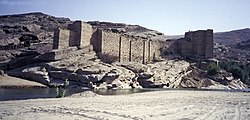| Part of a series on the |
| History of Yemen |
|---|
Historical affiliations
Kingdom of Awsan
Himyarite Kingdom
Kingdom of Aksum
Sasanian Yemen
First Islamic state
Rashidun Caliphate
Umayyad Caliphate
Abbasid Caliphate
Ziyadid dynasty
Najahid dynasty
Sulayhid dynasty
Zurayids
Ayyubid dynasty
Rasulid dynasty
Tahirid Sultanate
Mamluk Sultanate
Portuguese Aden
Yemen Eyalet
Qasimid State
Yemen Vilayet
Qasimid State
Sultanate of Lahej 1728–1839
Aden Province 1839–1937
Aden Colony 1937–1963
Aden protectorate 1937–1963
State of Aden within the FSA 1963–1967
South Yemen 1967–1990
Republic of Yemen 1990–present
Contents
The following is a timeline of the history of the city of Aden, Yemen.




